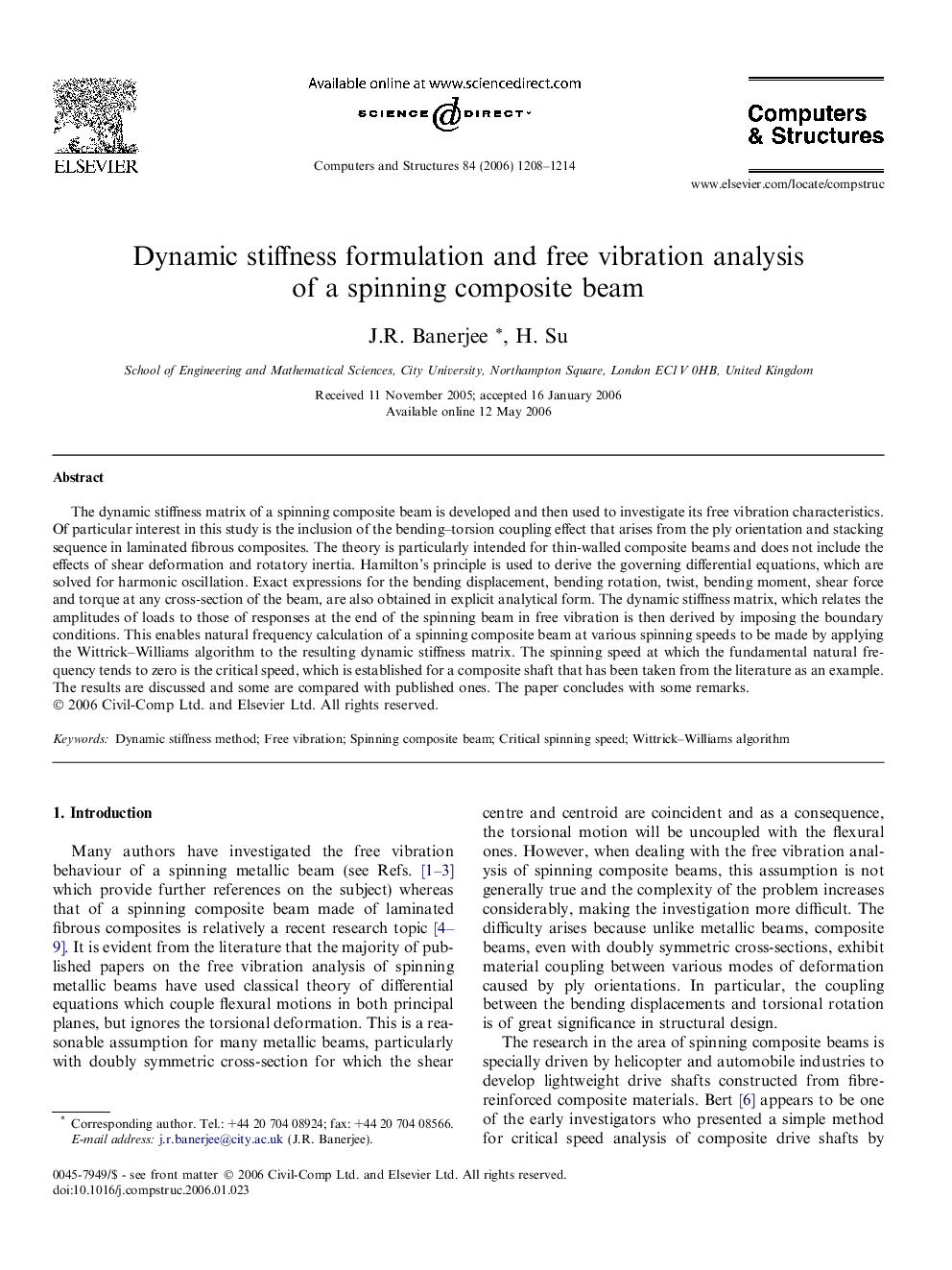| Article ID | Journal | Published Year | Pages | File Type |
|---|---|---|---|---|
| 511329 | Computers & Structures | 2006 | 7 Pages |
The dynamic stiffness matrix of a spinning composite beam is developed and then used to investigate its free vibration characteristics. Of particular interest in this study is the inclusion of the bending–torsion coupling effect that arises from the ply orientation and stacking sequence in laminated fibrous composites. The theory is particularly intended for thin-walled composite beams and does not include the effects of shear deformation and rotatory inertia. Hamilton’s principle is used to derive the governing differential equations, which are solved for harmonic oscillation. Exact expressions for the bending displacement, bending rotation, twist, bending moment, shear force and torque at any cross-section of the beam, are also obtained in explicit analytical form. The dynamic stiffness matrix, which relates the amplitudes of loads to those of responses at the end of the spinning beam in free vibration is then derived by imposing the boundary conditions. This enables natural frequency calculation of a spinning composite beam at various spinning speeds to be made by applying the Wittrick–Williams algorithm to the resulting dynamic stiffness matrix. The spinning speed at which the fundamental natural frequency tends to zero is the critical speed, which is established for a composite shaft that has been taken from the literature as an example. The results are discussed and some are compared with published ones. The paper concludes with some remarks.
